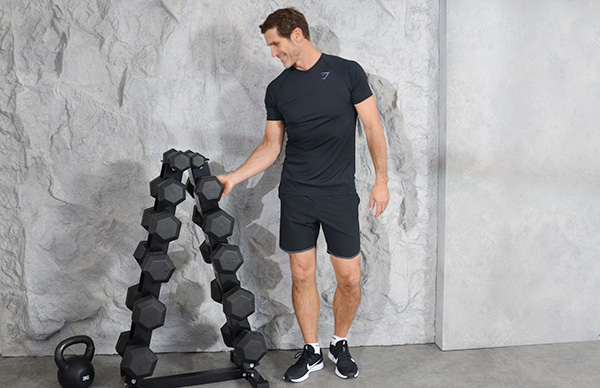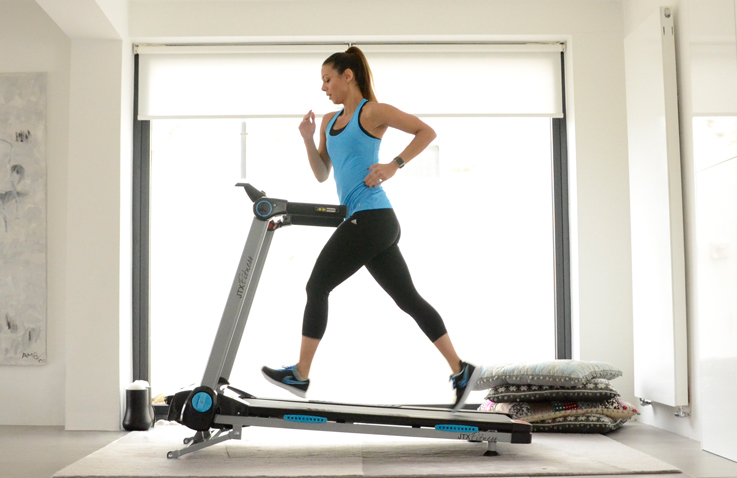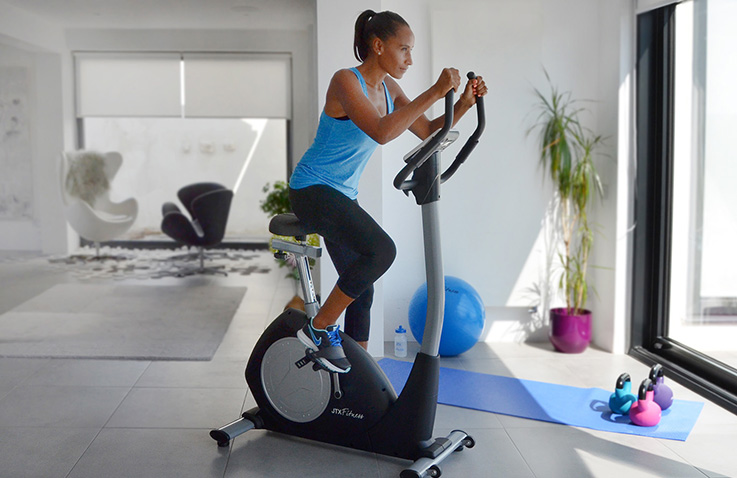We use cookies to give you the best website experience. Please click “Allow Cookies” to accept their usage. For more details read our Privacy and Cookie Policy. By continuing to browse our site, you accept our use of cookies.
The Benefits of Interval Training

In this article, we’ll put the benefits of interval training under the microscope, and share our top interval training exercises with you. Interval training is a highly effective tool for increasing running performance over long and short distances. Interval training will improve the efficiency with which your body transfers oxygen-rich blood to your muscles while training.
WHAT IS INTERVAL TRAINING?
High Intensity Interval Training (HIIT) involves 15 - 20 minutes of switching between short bursts of extreme effort, to rest periods of moderate intensity. You should continue the same exercise throughout, alternating between a faster and slower pace, for example switching between sprinting and jogging. Interval training can be extremely effective on treadmills, cross trainers, exercise bikes and rowing machines because they provide a consistent environment so that you can focus on your effort levels. Intervals are also great in a swimming pool or at a local running track.
For the best results, we recommend using a heart rate monitor to keep your workout on track. The interval pace should be enough to raise your heart rate to at least 80% of your maximum heart rate. The recovery pace should allow your heart rate to return to 60% of your maximum heart rate. You should be able to talk freely during the recovery period. Find out more about heart rate training in our heart rate training advice blog.
Please warm up!
Take time to warm up before starting intervals. The abrupt change of pace may lead to cramps or injury if your body hasn't been properly acclimatised.
What can High Intensity Interval Training (HIIT) do for me?
Here’s a summary of the key benefits of this style of training:
#1. More results in less time
Before HIIT was discovered to be better, moderate-intensity continuous training (MCT) was considered as the gold standard of cardio. But now, HIIT is widely regarded as the more efficient cardio activity. It can be sustained longer compared to MCT. This puts the body under greater stress and gives you better results, making interval training more efficient than continuous training.
#2. Increases your aerobic capacity and anaerobic capacity simultaneously
By taking part in interval training you can also improve your body's respiratory function. It will improve your aerobic capacity. This will increase the volume of oxygen your body can use while exercising, leading to better performance. The more oxygen your body can use the better.
A study by Dr. Izumi Tabata shows that high-intensity interval training also improves your anaerobic capacity simultaneously. Your anaerobic capacity influences the amount of power you can put into an intense cardio activity, like sprinting or biking.
#3. Improves Peak Performance
The performance-related benefits don’t stop there, by doing interval training you can also increase your speed and endurance in activities such as cycling or running. This helps if you’re preparing for a competition, or if you need to run for the bus every now and then!
On a related note, you will drastically increase FTP (Functional Threshold Power). FTP is your ability to sustain your highest possible power output over 45 - 60 minutes. This is a major advantage in competitive cycling and useful in regular cycling as well since it makes cycling uphill less of a struggle.
#4. Burns more fat
Interval training can also help you with weight loss goals. Regular HIIT training will help you burn more fat.
Interval Training Exercises
Rowing Machine Interval Training
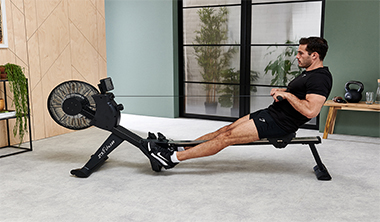
One of the best ways you can tackle interval training is by using a rowing machine. Rowing machines offer a full body workout. This saves you a lot of time compared to other cardio workouts, as the more muscles you use - the more calories you will burn. When combined with interval training, the effect is multiplied.
Warm Up
Set the resistance level to low and start rowing at a steady pace for 3 minutes.
#1
Set the resistance to high. Now pour in every ounce of effort you have for the next minute to row as hard as you can.
#2
Reduce resistance level and row steadily for one minute.
#3
This workout has a 1:1 work-to-rest ratio, you work hard for 1 minute and rest for another. Repeat this for as many sets as you can within a 20-minute time frame. By the end of your workout, take note of your stats and track progress over time.
Interval Training Running

If you are training for a marathon, you’re in luck. Interval training can make a great addition to a marathon or half marathon training plan. Having a treadmill makes this even easier since most come with interval training programmes. So, if you’re looking for convenience as well as a high impact workout, consider training on one - rather than running outside.
Warm Up
Set the pace at a low level and jog lightly for 2 - 3 minutes.
#1
Set the pace to a high level and push yourself for 1 - 2 minutes by breaking out into a sprint. Don’t tire yourself out too quickly, make sure that your effort can be sustained for at least a minute. Don’t worry, the amount of effort you can put in will increase over time, the more you do this training.
#2
Set the pace low and jog or walk at a steady pace for 2 - 3 minutes.
#3
Then return to the faster pace for the same amount of time. Repeat this for as many sets as possible within a 20 minute time frame.
Interval Training Running Exercise #2
Warm Up
For this one you’re going to want to warm up with dynamic drills for 10 minutes. Leg swings or walking lunges are great examples.
Do 20 reps for each limb used in the dynamic movement. Dynamic drills like this will prepare the nervous system for the demands of high-speed running.
#1
Set the pace at a high level. Sprint for 400 metres with a significant amount of effort, you can track this distance on the treadmill.
#2
Set the pace to low and jog lightly for 30 seconds.
#3
Repeat these steps as many times as possible within a 20 minute time frame. This interval exercise is one of the best for building up your speed.
Interval Training Cycling

Unlike cycling constantly outdoors, cycling in intervals on an indoor bike or turbo trainer will improve your cycling in multiple areas. JTX Fitness’s exercise bikes will track important stats such as cadence, speed, and distance with fine-tuned accuracy, allowing you to focus on getting the most out of your training.
Warm Up
Hop onto your bike and set the resistance at medium. Cycle at a steady pace for 3 - 5 minutes, and brace yourself for the incoming intensity.
#1
Set the resistance higher and cycle as hard as you can for 30 seconds.
#2
Set the resistance back to medium and take another 30 seconds of easy cycling at a high tempo.
#3
Repeat this at least 10 times, once you’ve done that you will have completed a set.
#4
Set the machine to a low resistance and cycle at a relatively slow pace for 5 minutes. Do this in between every set.
#5
Complete at least 2 - 4 sets to ensure this workout's effectiveness. This type of interval training is great for building the sustained power you’ll need to cycle fast for longer periods (FTP).
Interval Training Cycling: Exercise #2
Warm Up
Ride at a steady pace with low resistance for 10 minutes.
#1
Set the resistance to high and using a heart rate monitor, cycle at 85% - 90% of your maximum heart rate for two minutes. You should be working very hard to pull this off! A lot of exercise bikes also feature heart rate training programmes to help you keep track of this.
#2
Set the resistance to a medium level and cycle at 60% of your maximum heart rate for 3 minutes.
#3
Repeat this 4 times.
#4
Cool down for 10 minutes by setting the resistance to low and cycling steadily. This interval training exercise is geared more towards losing weight.
Cross Trainers Interval Training

One of the many reasons people opt to use a cross trainer for their interval training is because it’s a low-impact exercise that works the whole body. So, it’s an effective way to train around an injury or to prevent one.
Warm Up
This workout will take 25 minutes. Start off by setting the resistance low, then go at a steady pace for 5 minutes. You should be able to feel your core, arms, and legs engaged by the end of the 5 minutes.
#1
Increase the resistance to a high level and push yourself for 30 seconds.
#2
Set the resistance to a medium level and recover by going at a steady pace for a minute and a half. You have now completed a set.
#3
Complete 5 sets, with your recovery reducing by 15 seconds with each set. Going from 1.5 minutes and until you get to 30 seconds.
#4
Repeat the previous steps until you’ve done a total of 10.
#5
For the last five minutes, cool down by running steadily on a low resistance.
Bodyweight Interval Training
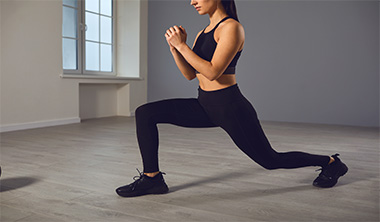
If you don’t have access to cardio equipment, you can use your bodyweight to take advantage of this time-efficient training style. The following exercise will be 30 seconds of effort, pushing yourself as hard as you can. The 30 seconds of recovery should involve no movement.
Warm Up
The following workout should be completed within 10 minutes. For 2 minutes, get the heart pumping with some jogging on the spot, star jumps, press-ups, and sit-ups.
#1
Do 30 seconds of jump squats, then take 30 seconds rest.
#2
Try 30 seconds of frogger jumps, once that is done you will have earned 30 seconds rest.
#3
Attempt 30 seconds of high knee skips, after which you can rest for 30 seconds.
#4
Do 30 seconds of cross jacks and then take another 30 seconds to rest.
#5
Try 30 seconds of push-ups, after those 30 seconds are up, take 30 seconds to recover.
#6
Do 30 seconds of lateral bunny hops, then take 30 seconds to rest.
#7
Attempt 30 seconds of planking and take 30 seconds to rest.
#8
Do 30 seconds of reverse lunges and hops, recover for 30 seconds.
#9
Try 30 seconds of V-crunches and 30 seconds rest.
#10
Do 30 seconds of plank jacks and then have your final 30 seconds of rest.
By adding interval training to your schedule, you can essentially fast-track your fitness journey. However, it’s important that your let your body recover from that intensity. But just how much exercise should you do per week? In reality, you should only train in this way three times a week at most.

